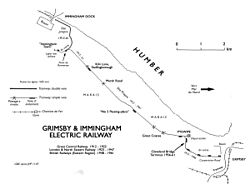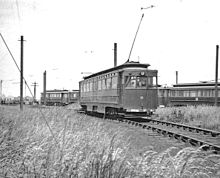The Corner Shop.
In the late 40's & 50's there were no supermarkets and people had to go from one shop to another to get the weekly shopping.
Most communities had a corner shop where the housewife went to get her groceries, this was done every couple of days and not as now with one visit for the whole weekly shop. There were no fridges so perishable items had to be used quickly and then replenished. Our local grocery shop was "Kenningtons" on the corner of Taylor Street & Phelps Street. Here my grandmother & my mother bought all their groceries, no self service here but a lady behind the counter would take your list and get it for you. I often went with my mam, my favourite item was boiled ham or bacon. This would be sliced off a larger piece of meat on the bacon slicer which was a fearsome implement like a circular saw that traversed back and forth slicing thin slices.
There was often a queue at the counter and you had to wait your turn but sometimes someone would rush in and try to jump the queue with the excuse "sorry, can I but in? I've left a pan on the cooker". Nobody believed this of course.
My grandmother often only wanted a couple of things so she would send me with a note and some money. Sometimes it would be for a plain bread loaf and I would bite off the corners on the way home!
Going to the Library.
Another "shop" we went to was the "Green Circle Library" which was a private commercial lending library located in a shop. There were several of these but I can't remember when they disappeared.
A local man made good.
On the main road between Grimsby and Cleethorpes was Ron Ramsdens Hardware Store. As the name suggests it sold all manner of hardware and home cleaning products required for the housewives' daily cleaning and washing tasks. I remember going there with my mam and seeing dolly tubs, washboards, buckets & mops and all manner of things hanging up at the door and displayed
 |
I can't find a picture of Ramsdens original shop
but this one in Horncastle is very close to how
I remember it looked. |
across the pavement outside. Ron Ramsden, the owner would have a conversation with my mam or grandmother. He went on to expand the business over the years and it's now a very well known large department store and supermarket. It occupies the most of the block of shops where his original hardware shop once stood.
Shopping areas.
Grimsby had two main areas for shopping, one was Freeman Street which was close to the Fishdocks and was a thriving hub of shops
 |
| Freeman Street. |
where you could but just about anything you needed. The other shopping area was known as "going up town" and the shops were considered to be a bit more "up market" and was where people went for that special item. Once a year, at Christmas time, we went up town to a large "posh" department store called Guy And Smiths.
 |
House of Fraser, formerly called Binns and
before that Guy & Smiths. |
I really looked forward to our visit, for one reason, they had a lift!
The lift took shoppers from the ground floor up to the two upper floors, it was basically a large wire cage with two sets of doors so as it traversed up or down you could see the floors falling away or rising up to you. It had a lift attendant and I can still remember the excitement of travelling on it.
The Co-Operative.
One of the best shops a small boy could go to though was the local Co-Op store, for one reason only. The "change machine!" When you walked in the first thing that hit you was the lovely smell of roasting coffee beans in the coffee grinder and the polished wood counters. I also remember that it was always dimly lit and so the electric lights were always on. My grandmother or mam would get their items at the counter and then came the high spot of the visit when the counter assistant operated the "change machine"! Unlike today there was no cash register or checkout, you gave the assistant your money and she would put it into a metal tube attached to an overhead wire wire system rather like a cable car. Details of how much change went in too and it was "fired" along the wires to a central cashiers office, the cashier removed the money, put the money back into the tube to the correct amount for your change and fired it back to the front counter. Pure magic for a small boy and something I never tired of watching.
The Butcher who often "Played Away!"
Going to the shops wasn't my favourite pastime and my grandma knew this so one day, to encourage me, she said she was going to take me to see a real live footballer! When we entered the local butchers shop though I began to smell a rat! I'd been tricked into shopping I thought, but no, my Nanna never told a lie. Behind the counter was a huge chap in the familiar butchers striped apron and I was told that he was indeed also a footballer and played for Grimsby Town Association Football Club! He came out from behind the counter to tell me all about being a footballer and I was in awe of him, even though I wasn't much of a football fan then and I'm still not now. In the 1950's most professional footballers were only part time and had to have another full time job to earn a living, a far cry from the hugely over paid Premiere League footballers of today. Why did he sometimes "play away" away though? It wasn't what you might think, Grimsby Town Football club played then, as they still do now, at Blundell Park Football ground which is located in Cleethorpes so, in effect, they play all of their games AWAY from home! The only club at that time to do so but I think there are one or two others that have relocated to grounds away from their hometown since then.
Freeman Street Market.
I said earlier that there were two shopping centres in Grimsby but there was another quite separate area in Freeman Street with a character unique to the area. Freeman Street Market was established in 1873 and was, until the 1960's an open market of stalls on a large cobbled area. The Friday market was the big market day and I would go there with my mam or grandmother, they always said it was the cheapest place in grimsby to buy almost anything. It's still there but since being covered over it's lost a lot of the charm and atmosphere it once had.
Freeman Street Market spans the years and has survived to this day and so I think that's a suitable place to finish my memories of shops in my early life.
 |
Freeman Street Covered Market, still a popular place for Grimsby & Cleethorpes residents.
|






















.jpg&container=blogger&gadget=a&rewriteMime=image%2F*)
.jpg)
.jpg)









